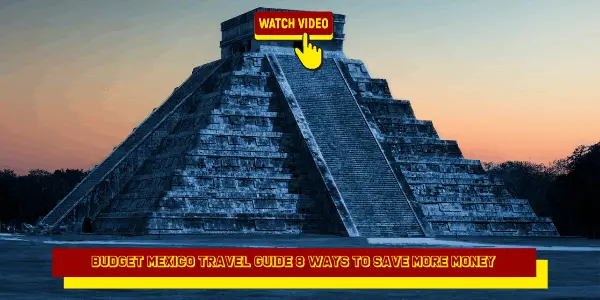The Budget Guatemala Travel Guide includes 18 Important Travel Planning Tips that will allow you to see and do more on your budget. Learn how you can benefit.
Welcome to the Guatemala Travel Guide! Guatemala is one of those destinations that manages to combine utterly endless variety while also conveniently ticking all the boxes on most people’s travel itineraries. Anyone looking for colonial style architecture (often in shabby-chic states of disarray), ancient ruins, spotless beaches, diverse natural life, and era-spanning cultural colors need simply look no further.
One of the reasons why Guatemala has proven so popular with visitors in recent years is that you don’t need either a huge amount of time or energy to see much of the country. You really can see the best within just a couple of weeks – although those who choose to stay longer will likely never want to step foot on that plane home. The Guatemala Travel Guide will discuss everything you need to know about how best to explore and enjoy your time in this Central American jewel!
Budget Guatemala Travel Guide – What Are the Best Places to Visit in Guatemala?
Something most visitors to Guatemala appreciates by the end of their stay is that the best sites tend to be rather different from each other. This isn’t the kind of country where you’ll spend day after day looking at similar kinds of things. You can quite realistically hop from beach to mountainside to jungle and sociable towns as you travel around.
Even better, those key sights happen to be among the very best of their kind in Central, or for that matter, Latin America. It is pretty crazy to wonder how so many world-class attractions happen to be packed into such a relatively confined and accessible area. Here is a selection of what the team at the Guatemala Travel Guide would consider being utterly unmissable.
The Mayan Tikal ruins are considered one of the most important and best-preserved of their kind. Do not underestimate how large the site happens to be! With over 3,000 structures, including plenty of pyramids and temples, you’ll probably need at least a couple of days to explore the ruins in any kind of completeness. Just as impressive as the ruins themselves is the jungle setting.
You will see monkeys jumping between those relics, many of which are still today covered in thick jungle vines. Anyone wanting as close to an ‘Indiana Jones’ experience as is possible will simply be blown away by Tikal. Be sure to check out both the Museo Popol Vuh (Mayan relics) and Museo Ixchel del Traje Indigena (Mayan costume) museums in Guatemala City either before or after your trip here.
Talking of Guatemala City – the capital is one of the tougher places to fall in love with! The architecture is famously shabby and besides the former colonial districts, there isn’t a whole lot of photogenic qualities unless you’re looking for ‘rawer’ snaps. That being said, it is worth spending a little time here to check out the aforementioned museums and also some of the amazing markets where you’ll find everything from handicrafts and outstanding fresh produce through to the standard knockoff DVDs!
Guatemala City can be a challenge but is pretty much the only real obstacle that anyone should expect during a complete tour of the country. Give it a chance and you’ll soon realize that people are much friendlier towards visitors than you perhaps expect.
That being said, most visitors tend to spend most of their urban time in Quetzaltenango, Antigua, and Livingston out on the Caribbean coast. Each of these is well worth a visit not just because they are all very different from each other. Quetzaltenango (also known as Xela) provides a literal breath of fresh air after a couple of days exploring the capital and is best known for a more refined and better preserved colonial style that nowadays plays home to a thriving local arts scene.
Keep an eye out for the many community art projects – chances are you’ll be invited to join in! One of the lesser-known facts about Guatemala is that people are seriously into volunteering and community efforts. You’ll see some of the best right here.
Antigua is utterly lovely and as stark a contrast to Guatemala City (much as we love it) as you’ll find. Modernity never seemed to really reach this pristine, cobblestoned town, and you’ll notice that people seem rather happy about it for the most part. The fact that the town is also set amongst some of the most spectacular volcanoes in the region makes Antigua one of the most iconic and popular destinations in Central America.
Fortunately, it has a knack of also never feeling crowded making it the perfect place for some relaxing and exploring with genuinely spectacular views. Livingstone out on the coast is a backpacker’s favorite and one of the best (and only) places to catch regular boats out for snorkeling and fishing expeditions. The beaches are amazing and the perfect place to rest up after a while hiking through the jungle and mountainscapes.
Other key attractions that should certainly be among anyone’s travel plans would include the Lanquín Caves and nearby Semuc Champey. These atmospheric subterranean attractions can be a little spooky – especially with the thousands of bats and weird translucent colors – but are always breathtakingly beautiful. As for the volcanoes, you can take your pick between dormant or active – just remember that there are always some risks with the latter and you ought to take a local guide who knows the ropes.
Pacaya Volcano is without question the most spectacular (and daunting) and you should try to allow longer than you may expect to get up there and back. You can thank those volcanoes afterward for creating the magnificent beauty of Lake Atitlán – for many people their personal favorite part of this amazing little country. Here is the perfect spot to make yourself at home among one of the local lakeside villages and spend your time marveling at how lucky you are to be somewhere so gorgeous.
Hopefully, these pointers will give a good impression of what to expect from Guatemala. If you appreciate such variety and are looking for opportunities to explore a little off the beaten path, then this is probably the best choice in the whole of Central America.
Now that you are reading the Costa Rica Travel Guide, what’s next? Let’s learn more about other trips in the surrounding areas.
Budget Aruba Travel Guide – 8 Ways to Save More Money
Budget Bahamas Travel Guide – 8 Ways to Save More Money
Budget Barbados Travel Guide – 8 Ways to Save More Money
Budget Bermuda Travel Guide – 8 Ways to Save More Money
British Virgin Islands Travel Guide – 8 Ways to Save Money
Budget Guatemala Travel Guide – What Are the Best Things to Do in Guatemala?
The handy fact that you can enjoy such a wide variety of activities and experiences through Guatemala is without any doubt why this country is especially popular with younger and more energetic travelers. Providing you are happy to mix up your time appreciating Mayan culture and relics with some beachside fun and jungle adventures, then this really is an amazing choice either as a unique destination or as part of a broader regional tour.
Guatemala rather handily does lend itself a little towards ‘checklist travel’ as there are some iconic activities that every visitor should really try.
These simply must include the aforementioned Mayan ruins (remember to try and see the many lower-profile sites as you pass through the country), climbing the occasional jungle waterfall (and perhaps leaping from the top), turtle spotting along the beachfront, spend plenty of time lazing beside gorgeous volcanic lakes, and fully embracing the fascinating cultural life of each of the unique cities you’ll pass through on your travels.
We’d recommend making the use of various tour options as part of your travels as they are usually reasonably priced and play an important role in delivering tourism income directly into the hands of those who need it the most. You’ll find walking and bike tours in each of the major cities and these are really recommended not just for seeing the best sights but because you’ll also discover plenty of handy local tips along the way.
Guatemala City isn’t the safest place on the planet but an organized tour will offer a safe (and still unsanitized) perspective of the capital city and showcase the quality behind the murkiness. Romantic as it might sound to climb up an active volcano under your own steam – and nobody will try and stop you from doing so – a tour will provide a safer and more informative/enjoyable experience anyway.
Guatemala is pretty straightforward to explore and one of those places that have an extensive number of ‘must-see’ sites that do plenty of the harder work for you. All we’ll add is that you ought to consider trying to spend a little longer than you might expect to enjoy this country to the full. You’ll see plenty of one and two-week itineraries online that suggest you can see these key places and move on straight to the next.
If time is an issue there’s nothing wrong with that, all we’ll say is that you’ll find places in Guatemala that you’ll really wish you could stay for longer. This country is really not quite as easy to rush through as you may be led to believe. Go with the flow, approach the country with a degree of flexibility, and look for those many incidental little experiences that have a habit of cropping up each and every day.
Budget Guatemala Travel Guide – When is The Best Time to Visit Guatemala?
Guatemala can become quite busy during the peak times of year (December through April, and June/July) especially around holiday times. The weather is gloriously reliable and everything in the country will be in full swing – meaning accommodation prices rise and availability can become scarce. Book in advance wherever possible should you plan on visiting the most popular locations especially along the coastline.
October and November are a mixed bag. Yes – it is hurricane season – but hiking conditions inland will be much cooler allowing for easier going with usually decent enough visibility. If you aren’t especially bothered about spending too long around the beaches then this can be an excellent time to visit the Guatemalan interior.
Guatemala tends to be much quieter during the other months of the year and quite a number of attractions fully or at least partially close down for a break. Accommodation costs can plummet – making this a solid time to visit if you plan on staying a while and perhaps learning Spanish or doing some teaching/aid/charitable work.
| GOVERNMENT LINKS |
| General Information VISAS Tourism |
Budget Guatemala Travel Guide – Do I Need A Tourist Visa in Guatemala?
Guatemala is easy to visit and most visitors will not need to apply for a visa in advance. Travelers from the USA, Canada, Australia, NZ, and most parts of the EU (with some exceptions) only need to arrive with a valid passport. Usually, this is then stamped with a 90-day allowance. Check the exact requirements with your local government’s travel advice bureau as these are prone to change at quite short notice. Apply well in advance if you do require a visa as bureaucracy isn’t something the Guatemalan government handles especially efficiently!
It is worth noting that Guatemala is part of the C-4 arrangement whereby that 90-day allowance also applies to nearby Nicaragua, Honduras and El Salvador. You can pay a small fee for this to be extended or leave the zone entirely (Mexico or Belize are the handiest options) and then re-enter for a fresh allowance. It is quite feasible to stay as long as you like without requiring special visas or residency status by using this handy little loophole.
Last but not least – the Guatemalan border police are still prone to charging ad-hoc ‘administrative fees’. You shouldn’t have to pay anything to enter the country officially although you may want to skip the hassle and pay the modest charge anyway – it’s rarely more than a couple of dollars. Just ask for a receipt and more often than not those charges will suddenly vanish after a short (yet irritatingly inconvenient) wait. Such is Central America!
Budget Guatemala Travel Guide – What Currency Is Used in Guatemala?
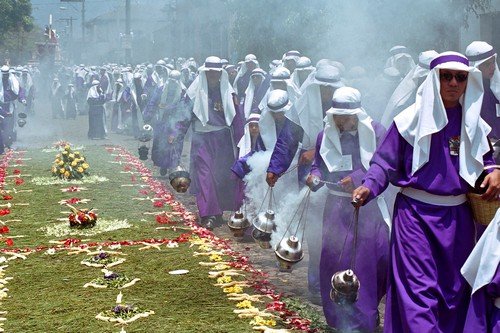
Guatemala uses the Quetzal (Q) that currently exchanges for close to Q7.5 = 1 USD.
The Guatemalan economy – or at least the exchange rate – is one of the more stable across the region but still prone to occasional spikes in either direction. It is also surprisingly enough quite straightforward to manage your money here, although you’ll be well advised to take some care choosing how best to do so.
Crime is still an issue in some (mostly urban) parts of Guatemala and you should try and avoid carrying too much cash at any given time. ATMs are everywhere and usually provide fair enough exchange rates although the added security provided by banks (almost all with armed guards) is also worth consideration. Money belts and secret wallets are daily essentials here and you should lock up any excess cash in hostel/hotel safes.
Another pleasant surprise in Guatemala is that cards are quite widely accepted nowadays. You’ll be able to use them at most hostels and mid-range hotels, as well as most restaurants and larger stores. Try and keep an eye on your card as skimming is quite common and be prepared to pay additional service fees (about 5%) as a matter of course. Don’t rely on cards for too much else especially within the quieter and more rural parts of the country.
Currency shortages are also an issue in some places so try and avoid using or being issued with large denomination notes. This is the kind of country where it is handy to try and save the lower value bills. US Dollars are also quite widely accepted but at inferior exchange rates, so only use them in an emergency.
Budget Guatemala Travel Guide – Do I Tip In Guatemala?
Tips are expected in most parts of the tourist industry. Around 10% is perfectly adequate for restaurant meals, and remember to also leave token amounts for bag porters and room attendants (just Q10 per day/bag is fine). It is not normal to leave change as a tip on rounds of drinks or cab rides – so only bother at your discretion.
One additional ‘tip’ worth mentioning is that most tour guides will often also expect a gratuity. Weird as it can be feeling obliged to tip the guide/boat captain or whoever, the sums are low enough (about Q50/person) not to really matter too much and never mandatory.
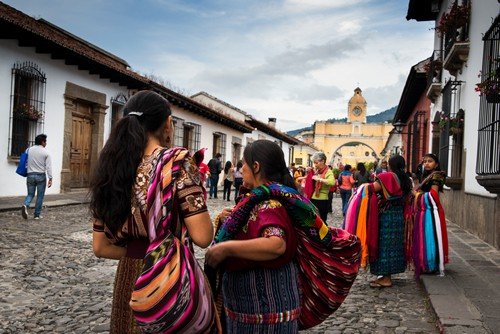
Budget Guatemala Travel Guide – What Kind Of Budget Do I Need In Guatemala?
Tourist income is extremely important to Guatemala and quite a high proportion of visitors are surprised at prices being a little higher than they may have anticipated. The basics tend to be very reasonable but additional experiences, tours, admission fees and so on can quite substantially mount up.
No matter how you look at it compared to most places Guatemala is still an absolute bargain but the days of being able to muddle by on $10/day or so are pretty much done and dusted. With that in mind, we’ll now run through three general approximate budgets compiled by the team at the Ultimate Guatemala Travel Guide.
Budget (Q350/day)
That roughly equates to around $40/day – which is more than most people initially may assume considering that hostel dorm beds rarely cost more than a quarter of that amount even during peak season. Even basic double hotel rooms rarely head much past Q200 for a night – and food tends to also be very affordable indeed.
Most budget visitors should easily be able to get by with a combination of convenience stores, casual street food, and perhaps one sit-down Comedor meal (about Q40) per day. Getting around is also cheap enough. Basic bus tickets from one side of the country to the other rarely pass Q50 or so.
All told the most basic backpacker shouldn’t need to spend more than around Q200/day combined for accommodation and sustenance. That is perfectly fine if you fancy hiking or lazing around – but when you decide to head out and engage in the most essential travel experiences you’re going to have to be prepared to spend a fair amount more.
Archeological sites charge on average about Q100 for basic admission and two or three times more for guided tours. Guided trips up those iconic and frankly must-see volcanoes are going to be from Q300 and upwards depending on the length and route you wish to take. So the key thing to take away from this is while the basics are certainly very reasonable in Guatemala, those essential additional expenses are – at least comparatively speaking – rather expensive.
Mid-Level (Q600-800/day)
Realistically this is around the right sort of figure a good proportion of people looking for a complete Guatemalan experience should be expecting to spend. You can certainly do it cheaper but those guided services play a massive part in making this country more accessible, engaging, enjoyable and safer to explore. Within this budget, you’ll be able to either stay exclusively in the more middle of the road hotels (and you’ll appreciate the upgrade after a couple of weeks) and/or look for private rooms in hostels.
The latter book out far in advance but can be an excellent middle ground that allows you to share tips with other travelers, make the most of the backpacker social scene, and still have somewhere more comfortable to relax come nightfall.
Along with upgraded accommodation, you’ll also pretty much have your pick of the restaurants. Even including drinks and ordering from the pricier end of the menus, it would still take some effort to push beyond Q150/person.
Make the most of the opportunity to take whatever additional tours and excursions you wish. Prices may be steeper than many anticipate but they tend to also be pretty standardized and worth that little extra for additional expertise. Perhaps look at some of the more exclusive options such as jungle wildlife treks or sea fishing.
High-End (C1200+/day)
The very best accommodation is going to include world-class eco-lodges, some classic colonial-era central hotels, and the most luxurious beach resorts. As you may have anticipated, the luxury end of the market isn’t exactly crowded with options but where they do exist they tend to be something very special indeed.
Prices are still not unreasonable – top-drawer accommodation will start at around C600 and those prices will climb rapidly during the peak season. The same is true of the most exclusive restaurants where you’ll be able to rub shoulders alongside Guatemala’s great and good for still not much beyond C250/person.
Private tours are the way to go if you are lucky enough to enjoy this level of budget. You’ll be able to hire expert guides to the key archeological sites and more general drivers/concierge-style services for between C800-1200/day.
Both can truly unlock this country with the advantage of also providing personal transport that’ll take you safely pretty much wherever you wish to go. Expect to pay extra if you do decide to hire a vehicle. Good 4-wheel options are pricy and start at about C800/day, not including gas.
Budget Guatemala Travel Guide – What Languages Are Spoken in Guatemala?
Guatemalan Spanish is spoken by the majority of people you’ll likely encounter although an estimated 21 other Mayan languages are also spoken in more out of the way places. English is not commonly spoken outside of the tourist economy so a little basic Spanish can be really useful to help get around.
Budget Guatemala Travel Guide – What Religions Are Practiced in Guatemala?
Guatemala is 70% Roman Catholic and this denomination is specially protected within the country’s legislature. The rest is mostly made up of Protestants and a handful of minority religions. You’ll likely notice that religious buildings, shrines, statues and so on are very common here. Try and dress smarter than usual if you plan on visiting some of these. A good amount of the best colonial-style architecture also happens to adorn working churches – you’ll probably be refused entry if you’re especially scruffy.
You’ll not likely encounter any issues because of Guatemalan’s sometimes quite overt religiosity. You may want to adopt a lower-key approach to your own religious preferences should they potentially cause any confusion.
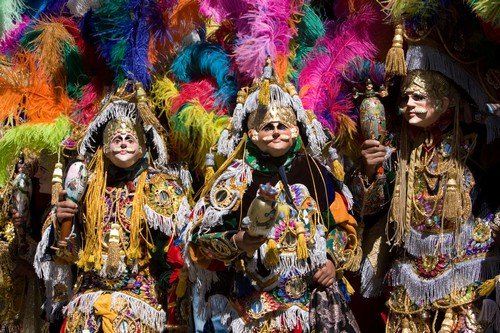
Budget Guatemala Travel Guide – Practical Tips From The Guatemala Travel Guide
At this stage of the Guatemala Travel Guide, we’ll start to take a look at some of the practicalities involved with exploring this amazing country. Plenty of people still assume that Guatemala is especially dangerous/scary and we’ll cover that in more detail shortly, but be assured for now that it is no worse than many other places in Central and Latin America.
Visitors who do not go looking for trouble and observe the basic security measures you simply ought to understand before visiting this kind of destination should be perfectly fine. Once you have looked past those misconceptions (and some would say left Guatemala City!) you’ll discover a really chilled out, peaceful, and openminded country that goes out of its way to make visitors feel welcome.
There’s plenty of good reasons why so so many people who tour Central America tend to enjoy their time here more than any other place they get to.
Budget Guatemala Travel Guide – What About Health and Safety in Guatemala, Is It Safe?
Street crime against visitors in the major cities is considerably rarer than it used to be – perhaps in no small part because tourists don’t (or shouldn’t) need to carry as much cash on their person as they used to. Still take care when choosing your ATM and make sure you know which areas to avoid. If you have any doubt then simply flag down a cab (they’re everywhere) and get to somewhere safer.
Opportunistic thieves have started targeting more rural areas with popular walking trails in recent years – and this is certainly one of the many ways where organized and escorted hikes are well worth the money. The same is true when it comes to transportation. As a visitor, you’ll probably be safer taking public transport compared to hiring your own transportation as carjackings are also relatively common.
All that being said providing you pay attention to these risks and understand that they are perfectly easy to circumvent you should have no problems avoiding crime during your visit to Guatemala.
The Guatemalan health service is pretty extensive and while prices are very low you should still take out comprehensive medical insurance that includes repatriation cover. Any injured/sick visitor will most likely be automatically transferred to private hospitals where both care standards and prices are much higher. Guatemala has – by Central American standards – reasonably good healthcare but it isn’t really specialized towards catering for tourists.
If you get seriously ill you’d be best off getting out of the country as soon as possible. Consult with your doctor before you visit Guatemala and undertake the recommended vaccinations. Usually, these are limited to hepatitis A & B and typhoid although rabies is also a sensible inclusion. If your prescription medications are lost/stolen you’ll need to visit a doctor or ideally attend one of the larger and better-stocked hospitals. Don’t expect branded medications although some may be available through private clinics.
Most visitors get ill because of environmental issues. Food preparation can leave something to be desired so stick to the busiest places with the highest turnover (they usually use fresher ingredients). Mosquitos are a problem so take seriously effective (DEET grade) repellent and try to keep large parts of your body covered at all times. Know the warning signs for heat and damp related health conditions and how to respond to these as soon as they are noticed.
Take care when swimming as strong currents/tides are rarely signposted. Last but not least – avoid tap water. Locals will claim it’s perfectly fine but they’re used to it. This is probably the #1 reason for overseas visitors getting sick in Guatemala!
Scary as Guatemala can seem you’ll notice that every single one of these potential issues can quite reasonably and easily be bypassed. Follow the rules and you’ll be seriously unlucky to become either a victim of crime or fall seriously sick.
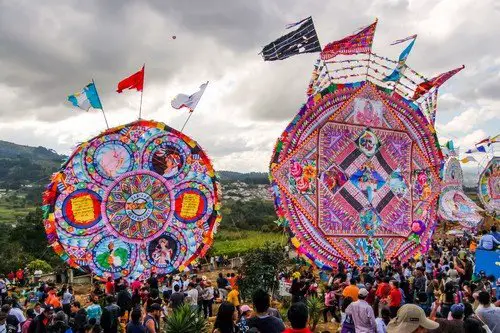
Budget Guatemala Travel Guide – What is the Best Transportation in Guatemala?
Guatemalan buses come in all shapes and sizes. No matter where you are in the country there’ll be a way of getting elsewhere by bus. The network is largely dominated by ‘Chicken buses’ that will stop anywhere for anyone and typically charge prices estimated on the length of the journey. They’re astonishingly cheap and a thrilling way to get around provided you don’t mind or can at least tolerate the crowded and haphazard conditions.
Luxury bus routes have started popping up more recently but they’ll only likely serve the major routes between cities. Expect airconditioning and the onboard TV to both be on full blast so bring a jumper/blanket and some earplugs. Even less formal ‘minibusses’ kind of double up as private hire cabs and are usually willing to take groups pretty much anywhere. Chances are you’ll share the ride with others although they are usually a little more direct compared to the Chicken buses.
Take care when traveling by bus in Guatemala and it is worth trying to make sure you’ll arrive at your destination before nightfall.
You’ll need to take a ferry if you plan on visiting Livingstone but beyond this most boats only serve as pleasure cruises along the coast. There is no rail service whatsoever or anything that resembles an internal flight network – so you’ll have no choice but to use the roads one way or another.
As discussed previously car hire is relatively pricy and comes with some additional risks that can make it not really worth the bother. Cycling is a solid option for confident cyclists who are not scared of challenging roads and sharing the road with often substandard drivers. On the plus side, distances are relatively reasonable and you’ll pass by some amazing scenery along most routes.
The Guatemala Travel Guide recommends that most visitors should aim to use Chicken buses to get around providing they are sure that they’ll arrive in their destination before nightfall. If you need to travel later in the day then a minibus service that will drop you right outside your accommodation is a safer and more sensible choice. Renting a vehicle is only really worth the hassle if you also take on a driver – which needless to say is going to become pretty expensive rather quickly.
Budget Guatemala Travel Guide – What Are the Best Accommodations in Guatemala?
Hostels are useful not only as budget places to stay but because you’ll be able to share tips/advice with other travelers, make arrangements to split transport costs, have reliable internet access and usually have informed and knowledgable staff to help with your plans. The drawback is that hostels tend to especially popular during the peak season for these exact reasons and you’ll be well advised to book your spots months ahead of arrival.
The hostel network is also pretty limited so you’ll also need to stay in budget hotels during some stretch of your trip. We’d recommend spending a little extra to enjoy little luxuries such as on-demand hot running water and a comfortable bed for the night. Hostels are perfectly adequate but rarely especially luxurious!
If your budget can take the hit then there’s certainly something to be said for looking more towards the higher end of the market. Prices can become pretty steep but some of the options can make for ‘once in a lifetime’ experiences without totally breaking the bank. Perhaps the most useful piece of advice we can offer here is to try and book hotels/hostels/B&Bs/homestays with people who can speak English if your Spanish is weak and are willing to go a little extra towards helping make your stay as comfortable and straightforward as possible.
Online listings are your friend here – use those recommendations when making your decision. Most visitors to Guatemala will gladly take a lumpy mattress providing the host is happy to help them book travel arrangements and provide handy little lifts here and there. Homestays are an excellent option for these – see the section below for more details.
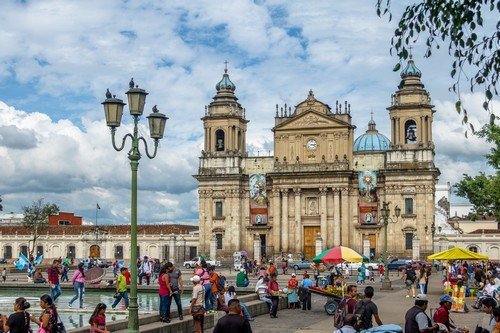
Budget Guatemala Travel Guide – How Can I Practice Responsible Tourism in Guatemala?
Guatemala has high levels of poverty, inequality, and is still reeling from a nasty civil war. Throw in drug gangs who have practically overtaken some neighborhoods and districts and it is clear to see that there are numerous serious problems still at large within this country. On the plus side, things are getting better, and the work of a huge number of charities and international aid organization is contributing towards that improvement.
Do your best to highlight the work they are doing (sometimes under incredibly serious pressure) on your social media feeds and encourage others to donate.
When weighing up your accommodation options take a look at homestay options. These provide travelers with simple lodgings and the opportunity to take part in daily family life. These are especially common around Lake Atitlán where you’ll have the chance to learn about Mayan culture and understand the experiences and pressures of everyday Guatemalan life.
It is a fantastic way of experiencing the country in a responsible manner and those insights are otherwise quite hard to find here given the sometimes rather significant language barrier. Spend some cash at the local craft markets when picking up your souvenirs.
Environmental issues mostly concern the Lake Atitlán region where the ‘most beautiful body of water in Central America’ is becoming increasingly polluted with agricultural chemical waste and plastics. Take that as a warning to try and avoid being wasteful during your time here. There’s nothing you can do about having to drink bottled water but you can certainly help pick up some garbage here or there.
Perhaps the most significant issue when considering ways to be responsible in Guatemala is to select only locally run tours or those which are operated by zero-profit charitable endeavors. You’ll have no lack of choice when deciding how to spend your money so skip the syndicated companies and try do use recommended services delivered by locals (especially the marginalized Maya people).
Budget Guatemala Travel Guide – What Food Should I Try In Guatemala?
It is quite tricky to pigeonhole Guatemalan cuisine as it has influences from Spain, the Caribbean, we dont want to do that in our Guatemala Travel Guide , Mayan culture, and increasingly African and even Cajun flavors. Wherever you decide to eat you’ll find all kinds of soups and stews to try – and some of these will be utterly sensational even though it can be a lottery!
Chicken Pepian the national dish and a popular lunchtime favorite consisting of chicken rolled and mashed with plenty of spiced pumpkin and sesame sauce. Kak’ik (turkey soup) is a classic Mayan option that is often served with a sensational number of chili peppers. Enjoy some amazing Guatemalan guacamole (say that backward!) to cool the palate and perhaps treat yourself to a Tres Leches Cake – literally a cake made with three kinds of milk – for dessert.
You’ll not struggle for variety or freshness in Guatemala – just remember that food preparation qualities aren’t quite what you may be used to. Vegetarians will have no problem finding suitable varieties on any menu although vegans may struggle a little especially if they cannot communicate their dietary requirements. As with many developing countries, it’s useful to have any dietary restrictions written down so you can present these when ordering your meal.
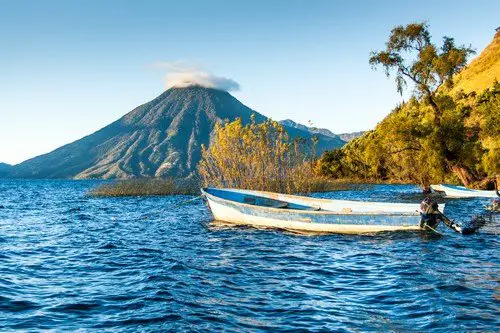
Budget Guatemala Travel Guide – What Should I Pack for A Trip to Guatemala?
Don’t underestimate the environmental conditions here. The Guatemala Travel Guide highly recommends that visitors bring a simple yet comprehensive first aid kit containing everything you’ll need to help get over basic illnesses such as diarrhea and stomach ache. People do often get sick during their first few days here but 99% of the time it’ll pass within 24-48 hours. Hydration capsules are handy as are antibacterial soaps and handwash. Don’t forget to pack a very powerful insect repellent!
Look to bring clothes that are suitable for the jungle. Lightweight, quick-drying, non-absorbant materials are generally the best. A good hat is also sensible and you’ll find that torches, battery packs, and electricity adaptors are always handy to have. Needless to say a good pair of boots is also a must.
You’ll find cheap yet invariably low-quality clothes and toiletries throughout Guatemala and there is an argument for not bringing much in the way of valuable besides cameras and phones. Leave valuable jewelry and anything else that is unnecessary – or could draw unwanted attention – at home.
Budget Guatemala Travel Guide – What Clothes Should You Wear In Guatemala?
Hard-wearing and practical (with long sleeves) are the best for the jungle interior while you’ll be able to wear pretty much whatever you want elsewhere in the country. Try and pack at least one set of ‘better quality’ clothes for nights out in the big city or when visiting more sensitive cultural attractions.
You’ll notice that many Guatemalan’s don’t follow the ‘beachwear is for the beach’ rule but that doesn’t make it sensible for visitors to follow the same practice. Avoid anything that’ll even potentially offend anyone and dress in a practical manner. Get that right and you’ll be absolutely fine.
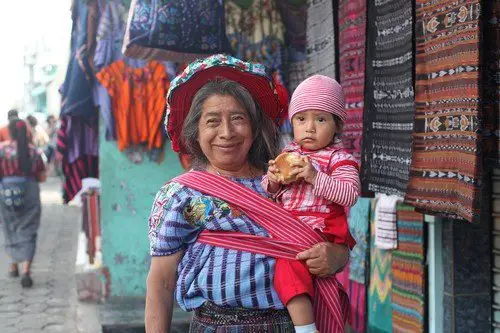
What Are Some Interesting & Important Facts about Guatemala?
Now we’re almost at the end of the Guatemala Travel Guide we’d like to thank you for reading and hope to have helped in some ways towards planning a trip of your own to this wonderful destination. Make no mistake this is the kind of country that the majority of people who visit cannot wait to return to again someday. Guatemala is certainly making progress and it would certainly not surprise us if it becomes a far more mainstream destination within the near future.
But for the time being, anyone who likes to explore lesser-charted waters and is willing to go a little further to unlock some of the most amazing experiences in Central America, this is the place to set course towards. Let’s now wrap up the Guatemala Travel Guide with a few fun and interesting facts!
▸ The Guatemalan Quetzal is named after the national bird. The Mayan culture used its feathers as a form of currency.
▸ Depending on who you believe chocolate, blue denim, and instant coffee were invented in Guatemala.
▸ The civil war is the longest conflict of its kind in Central American history – taking place over almost 40 years.
▸ Three of the thirty Guatemalan volcanoes are active.
▸ Tourism is a big deal here – it already employs around 35% of the population to catering for 1.2m annual visitors.
▸ Tikal Park is the world’s first mixed UNESCO world heritage site.
▸ Spelunking (also known as caving) is the second most popular national sport after soccer.
▸ Around 50% of the population is under nineteen years old.
▸ It is normal to fire guns into the air during Christmas celebrations. Sadly, people do die because of this every year.
▸ Close to 60% of the population is illiterate.
We hope you enjoyed reading the Budget Guatemala Travel Guide – and good travels! Contact us with any questions you may have about travel to Guatemala.

